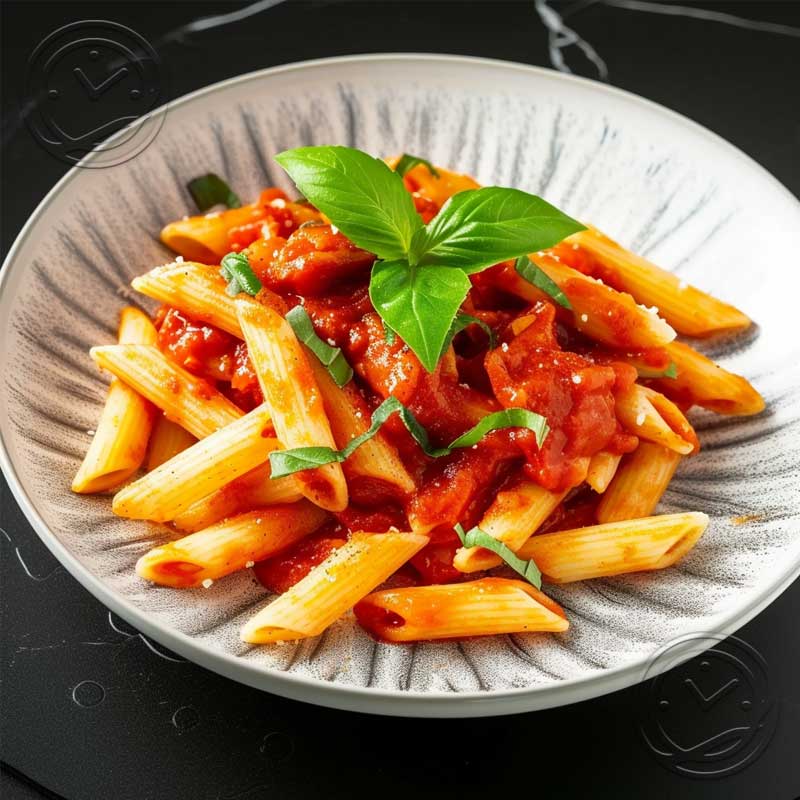Introduction
Pasta is a staple food in many cultures around the world, but what if you have celiac disease or gluten intolerance?
Gluten is a protein found in wheat, barley, and rye, and it can cause serious health problems for people with celiac disease.
Gluten-free pasta is made from alternative ingredients, such as corn, rice, or quinoa, and it is a safe and delicious option for people with celiac disease or gluten intolerance.
In this article, we will discuss the difference between gluten and gluten-free pasta, the health benefits of gluten-free pasta, and where to buy gluten-free pasta.
What is Gluten?
Gluten is a protein found in wheat, barley, and rye. It is what gives dough its elasticity and structure. When mixed with water, gluten forms a sticky network that traps gas bubbles, causing dough to rise. This is why gluten is essential for making bread, pizza dough, and other baked goods.
However, for people with celiac disease, gluten can be harmful. Celiac disease is an autoimmune disorder that damages the small intestine when it comes into contact with gluten. Symptoms of celiac disease can include abdominal pain, diarrhea, bloating, and weight loss. In some cases, celiac disease can also lead to other serious health problems, such as malnutrition and osteoporosis.
People with gluten sensitivity do not have celiac disease, but they can still experience symptoms when they eat gluten. These symptoms can include abdominal pain, diarrhea, bloating, and fatigue.
If you think you may have celiac disease or gluten sensitivity, it is important to see a doctor for diagnosis and treatment. Avoiding gluten is the only way to prevent symptoms of celiac disease and gluten sensitivity.
Is Mediterranean Diet Plant-Based?
Discover the truth about the Mediterranean diet – a culinary journey around the Mediterranean Sea. Dive into the rich flavors…
What is Gluten-Free Pasta?
Gluten-free pasta is a type of pasta that is made without wheat flour, which contains gluten. Instead, gluten-free pasta is made from a variety of other ingredients, such as rice flour, corn flour, or quinoa flour.
Gluten-free pasta is a good option for people with celiac disease or gluten intolerance, as it does not contain any gluten. It is also a good option for people who are looking for a healthier alternative to traditional wheat pasta.
Gluten-free pasta is made in a similar way to traditional wheat pasta. The ingredients are mixed together and then formed into a dough. The dough is then rolled out and cut into shapes. The pasta is then cooked in boiling water until it is al dente.
Gluten-free pasta is available in a variety of shapes and sizes, just like traditional wheat pasta. It can be used in a variety of dishes, such as soups, salads, and casseroles.
Difference Between Gluten and Gluten-Free Pasta
Gluten and gluten-free pasta are two distinct types of pasta that are made from different ingredients. Gluten pasta is made from wheat flour, which contains the protein gluten. Gluten-free pasta, on the other hand, is made from a variety of alternative flours, such as rice flour, corn flour, and quinoa flour.
There are a number of differences between gluten and gluten-free pasta, including taste, texture, nutrition, and availability.
Is Canola Oil a Fit for Mediterranean Diet?
Let's uncover a world where heart-healthy fats reign supreme, with olive oil often taking the crown. But what about the…
Taste
Gluten pasta has a chewy, slightly elastic texture that is loved by many people. Gluten-free pasta, on the other hand, can have a variety of textures, depending on the type of flour used. Some gluten-free pastas are soft and chewy, while others are more firm and al dente.
Texture
Gluten pasta is typically smooth and silky, while gluten-free pasta can be more grainy or chewy. This is because gluten-free flours do not contain gluten, which is a protein that helps to give pasta its smooth texture.
Brown Rice on Mediterranean Diet
Brown rice is delicious as it is beneficial. This unassuming pantry staple packs a nutritional punch, perfectly complementing the Mediterranean…
Nutrition
Gluten pasta is a good source of protein, fiber, and B vitamins. Gluten-free pasta can also be a good source of these nutrients, but it is important to read the nutrition label carefully, as some gluten-free pastas are made with refined flours that are low in nutrients.
In addition, gluten-free pasta is often fortified with iron and other nutrients, which can be beneficial for people who are following a gluten-free diet.
Availability
Gluten pasta is widely available in grocery stores and supermarkets. Gluten-free pasta is also becoming increasingly available, but it may be more difficult to find than gluten pasta.
Overall, there are a number of differences between gluten and gluten-free pasta. These differences include taste, texture, nutrition, and availability. It is important to consider these differences when choosing which type of pasta to eat.
Health Benefits
There are a number of potential health benefits of eating gluten-free pasta. These include:
- Improved digestion
- Reduced inflammation
- Less bloating and gas
- Increased energy levels
- Better sleep
- Weight loss
- Reduced risk of certain diseases, such as celiac disease, Crohn’s disease, and type 1 diabetes
Of course, it is important to note that not everyone who eats gluten-free pasta will experience these benefits. Some people may not experience any benefits at all, while others may experience only a few of the benefits listed above.
If you are considering trying gluten-free pasta, it is important to talk to your doctor first. They can help you determine if a gluten-free diet is right for you and can recommend the best way to make the switch.
Disadvantages
There are a few potential disadvantages of eating gluten-free pasta, including:
- They can be more expensive than regular pasta. This is because gluten-free pasta is made with more expensive ingredients, such as rice flour, corn flour, and tapioca starch.
- They may not taste as good as regular pasta. This is because gluten-free pasta is made with different ingredients than regular pasta, and the taste may be different.
- They may have a shorter shelf life than regular pasta. This is because gluten-free pasta is made with more delicate ingredients, and it may not last as long on the shelf.
Overall, the disadvantages of eating gluten-free pasta are relatively minor. However, it is important to be aware of these potential disadvantages before you decide to make the switch to gluten-free pasta.
Conclusion
In this article, we have discussed the difference between gluten and gluten-free pasta. We have also discussed the health benefits and disadvantages of gluten-free pasta. We have also provided a list of where to buy gluten-free pasta.
If you are looking for a healthier alternative to traditional pasta, then gluten-free pasta is a good option. However, it is important to note that gluten-free pasta is not necessarily healthier than traditional pasta. It is important to read the nutrition labels carefully to make sure that you are choosing a gluten-free pasta that is also healthy.
If you are looking for a gluten-free pasta that is both healthy and delicious, then we recommend trying one of the following brands:
- Barilla Gluten-Free Pasta
- Tinkyada Gluten-Free Pasta
- Riccioni Gluten-Free Pasta
- Trader Joe’s Gluten-Free Pasta
We hope that this article has been helpful. If you have any further questions, please feel free to contact us.






